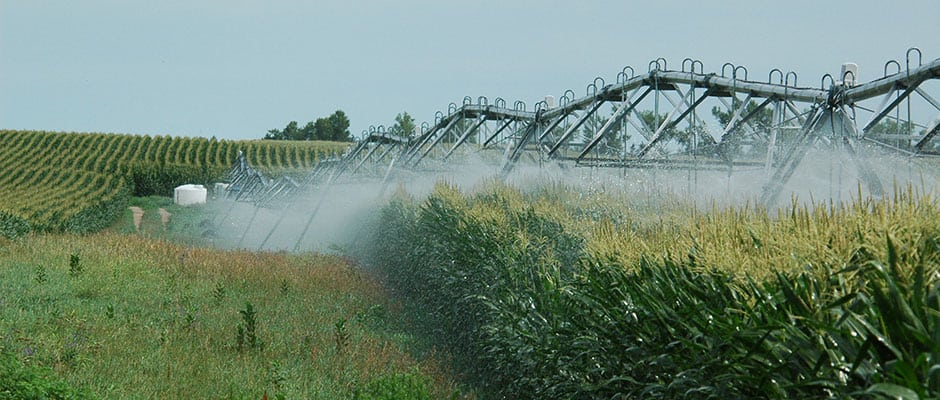Share this article
New Farm Bill Could Present Conservation Opportunities
An imminent correction in land values could usher in new conservation opportunities, according to a researcher.
Larkin Powell is the director of the Great Plains Cooperative Ecosystem Studies Unit — a network of 19 academic institutions in that region — and a member of The Wildlife Society. He recently conducted a study that looked at three key periods in the past — namely the 1930s, the 1950s and the 1980s — to determine how changing farm bills influenced conservation in the United States.
“The connection to conservation is that during each one of those corrections in the past … there were really innovative conservation packages that were developed,” Powell said.
The Conservation Reserve Program (CRP) is a federal government program authorized in the Farm Bill that, among other things, compensates farmers for setting aside parts of their land for conservation purposes. Launched in 1985 in its current form, the CRP was most recently updated in the 2014 Farm Bill.
“There’s the incentive for a farmer to do conservation on their land through that program. There’s a rental fee,” Powell said. “Most farmers know that they could probably get a little more if they could rent it to their neighbor,” he continued, but said the appeal is that they won’t have to worry about that land for 10 years.
The program works basically by allowing farmers to rent a portion of their land to the CRP, which is set aside for conservation for a fixed period. The fee the CRP pays for the land is based on land values at the time the farm bills get updated, and since they are fixed for long periods they don’t change as quickly as rising and falling markets.
The past few years have seen an increase in farmland values bolstered by the expanding biofuel market. As a result, landowners are pulling acres out of the program to grow corn despite the penalties of early withdrawal due to the high demand for the crop, and it’s difficult for CRP officials to compete. But peak prices at around $7 a bushel in 2007 have currently fallen to around $4, and could drop even more. This, in turn, could lead to a correction in land values that drops the prices back down.
“We’re at another peak right now. In the next five to six years, we should see another depression.”
In some ways, the history of farm bills in the United States has been intrinsically linked to conservation measures since the Great Depression when Franklin D. Roosevelt enacted the Soil Conservation and Domestic Allotment Act in large part to help farmers suffering from plummeting land values. While Powell said the money payouts for soil conservation given through that act was a way of “cloaking” payments to individuals, it resulted in land conservation important for wildlife habitat.
The economy eventually recovered and farmers could more easily make a living again, but the idea of these so-called farm bills stayed around, with fresh approaches to using the payments as ways to conserve wildlife habitat, among other things, in the 1950s and 1980s, following periods where the U.S. economy has gone through bad spells.
“We’re doing it to support the public,” Powell said. “Ever since then that’s been the legal reason why we can have farm bills.”
While bad for farmers seeking corn profits, a correction in land values would provide new conservation opportunities by the time the new farm bill is enacted in the 2018-2020 period (the bills are usually updated every 4-5 years).
The act of farmers withdrawing land from the CRP has led to less habitat for species like the greater sage-grouse (Centrocercus urophasianus), and some listed species. But Powell said that low land prices could provide the political will to make changes to the bill. These could include focuses on land around priority watersheds, or providing farmers incentives to use less irrigation water — especially in areas affected by drought.
Another possibility is offering incentives for farmers to group together to provide larger, more connected conservation areas. Farmers who provide ways to connect larger habitats together could be given priority when applying for the CRP.
In any case, the important thing is to start thinking and planning for it now, in order to optimize conservation opportunities, he said.
Header Image: Image Credit: Larkin Powell








